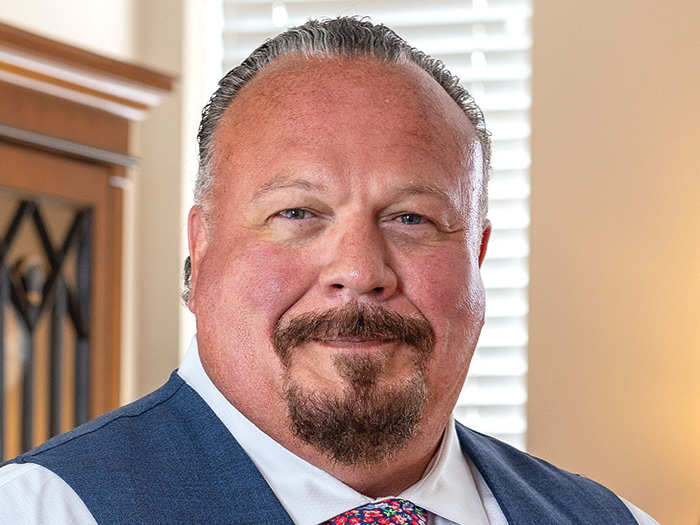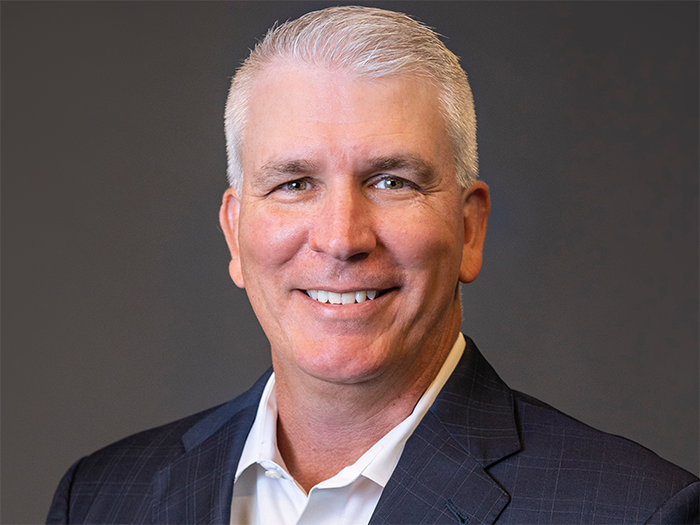Alternative Risk
Captive Pensions

Mitchell Cole was there at the get-go, back in 2003. As he tells it, the Stamford, Conn.-based director at Towers Watson and his colleagues had contemplated the puzzle of managing defined-benefit pension obligations through a captive insurance vehicle.
They batted the question around with insurance companies and investment banks. They didn’t get answers. They ran into walls.
The more questions they asked of external experts, Cole remembers, the more they wondered why they didn’t just keep the conversation internal.
Then a client came along that wanted an answer to that same question: Could it use captive insurance for its global pension risk management? Cole and team were determined to find the answer.
They established some ground rules. First, they didn’t want pensioners to be any less protected than they were before the transaction.
They also wanted to ensure pension regulators knew about the transaction, and if reinsurance ended up being used, they would notify insurance regulators too (even though they didn’t need their approval).
And they would fully explain it to the pension trustees. If they objected, the captive experiment would not move forward.
The transaction is not sleight of hand. It is not a move of funds from one pocket to another, not a tax play. No change in risk occurs.
“The risk is the risk,” Cole said.
What changes is simply how the risk is handled financially. Instead of 10 buckets of funds managed separately, it becomes, say, one bucket. It’s cost effective and more rational. It took 18 months to develop and test out with various legal counsel.
And it became a success.
Another company — a very well-known one, Coca-Cola — followed that pioneer and in 2011, it went public with its similar arrangement. Call it a pension captive.
Very few companies have followed in their footsteps.
“This is a very unique and niche area,” even for people involved in the captive insurance industry, said Lorraine Stack, business development leader, EMEA Asia Pac, at Marsh Captive Solutions Group.
The costs and uncertainties of defined-benefit pensions are of course far from new — and are only more pressing in the near-zero interest rate (or negative interest rate) investment climate.
Even when pension plans are frozen, as many corporations do, the legacy responsibilities still threaten balance sheets with volatility and uncertainty.
In its 2013 analysis of pension asset allocation for Fortune 1000 firms, Towers Watson estimated these firms hold more than $1.8 trillion in pension assets. Multinationals compound their pension issues through acquisitions, picking up plans around the world that are all managed differently and more than likely, not efficiently.
Even when pension plans are frozen, as many corporations do, the legacy responsibilities still threaten balance sheets with volatility and uncertainty.
Companies can transfer the risk to insurers through what are called buy-ins and buy-outs. In a buy-out, the insurer takes on the full responsibility for the obligation and the assets. A buy-in is a partial, part-time agreement on the insurer’s part to pay out benefits.
A third option is a longevity swap — a shorter-term hedge against longevity risk through an insurer or capital markets partner. All three beg the same self-insurance question that companies consider for P/C exposures: What if we use our captive insurer instead?
Worth the Climb?
Coca-Cola was motivated to establish its pension captive because it had the cash to cover its liabilities but the parent company lacked control over its obligations due to the fact that its U.K. and Ireland pensions were run by third-party trustees.
“We are a cash-rich organization, so we want to use the assets to cover the obligations rather than have debt sit on our balance sheets. But if you fund up too much in a plan where the company doesn’t have control, then you risk building up surplus,” one of its senior benefit consultants, Stacy Apter, said at a public risk management summit a few years ago, as reported by the trade press at the time.
To change that reality, the beverage titan arranged for a fronting insurer to write annuities to fund its pension commitments in the U.K. and Ireland, and then have its Dublin-based captive, Coca-Cola Reinsurance Services Ltd., reinsure them.
At the time, according to trade media reports, the total value of the annuities was $400 million, and the structure encompassed four pension plans. (Coca-Cola declined to comment for this article.)
You can sense the excitement building over the pension captive possibilities in a piece that Apter wrote for a 2009 Towers Watson report: “What if we could aggregate some of those small and medium-sized pensions? We could achieve improved investment results and efficiencies. What if we were able to add those small and medium pensions to our bigger pensions? That would be more interesting still. And what if we were to take this thinking to its logical conclusion — a global pension pool?”
The insurers willing to participate in these buy-in/buy-out captive insurance arrangements are on the cutting-edge, and realize it.
Captives aren’t commonly used for pensions, since so many of them are devoted to property/casualty risks.
However, according to Anne de Lanversin, head of sales investments solutions for AXA Pension Market in Paris, using an insurance contract for a group pension which is reinsured by a captive is an innovative risk management solution.
The truth of the matter is that not all multinationals or insurers have the derring-do to pull it off.
Take Coca-Cola. Its pension captive is but one captive that has garnered attention. In 2013, Coca-Cola’s Apter and colleague Laurie Solomon, director of risk management, took home the Award of Excellence from the World Captive Forum not just for pension work in U.K. and Ireland, but also for using its South Carolina captive Red Re Inc. to fund retiree health care benefits.
Red Re also reinsures international life, health and disability benefits, and at the time of the award, Coca-Cola was applying to the DOL to have it reinsure group life in the U.S. (which by 2013 it got permission to do for AD&D coverage).
And as Marsh’s Stack said, there are a limited number of companies with the assets needed to set up a pension captive.
“It takes significant resources and operational will to push something like this through,” Stack said.
According to a presentation given at the World Captive Forum in February 2015, only 10 defined-benefit plans are involved in pension captives: three in Ireland, three in the U.K., and one each in Canada, Germany, France and the Netherlands.
To provide some context, the total number of employee benefit captives globally is estimated to be as high as 133.
Captives with the lowest savings potential but also the lowest difficulty to implement include international group life, long-term disability and accident, although difficulty and savings increase as captive owners transfer those risks for their U.S. populations.
On this scale, post-retirement medical benefits and defined-benefit plans rank the highest. Yet the total premiums paid to these captives is at more than $4.7 billion.
An estimated $3.3 billion of that is paid in pension captives. The next closest category is international benefits with $700 million in premiums, followed by retiree medical at $440 million and U.S. life and long-term disability at $260 million.
In other words, it’s a tiny subset of a small subset of the captive world in terms of formations — but not in premium.
Pension captives can provide corporations with investment control of funds previously out of a parent’s reach, with the ability to repatriate surplus, while also providing trustees with additional security through the financial strength of a highly rated insurer.
“These benefits might be worth it for the few with sufficient critical mass and ability,” Stack said.
Towers Watson executive Mitchell Cole added that he believes only a “cadre of companies” will ever employ the pension captive strategy.
Guernsey to the Rescue
What is taking hold faster than buy-in/buy-out pension captives, said Stack, is a second option. Not a pension captive per se, but more of a “synthetic front” for hedging longevity. It’s an incorporated cell captive (ICC) which allows pension trustees to access reinsurance markets directly for a longevity swap. This lowers fronting costs and affords more flexibility in how pension trustees can set aside money.
“It’s the old P/C captive story evolved into a brand new area.” — Lorraine Stack, business development leader, EMEA Asia Pac, Marsh Captive Solutions Group
Either the trustee creates its own ICC or purchases a cell in an ICC built and sponsored by a third party.
“It’s the old P/C captive story evolved into a brand new area,” said Stack. “We expect to see more movement in this area.”
The main domicile for this longevity movement is the Bailiwick of Guernsey, the No. 1 captive domicile in Europe and the fourth biggest worldwide with about 800 insurance entities.
This past July, Guernsey announced a $24.16 billion longevity risk transfer transaction.
In it, the Guernsey-based captive of the BT Pension Scheme entered into a reinsurance deal with Prudential Insurance Co. of America. To give a sense for the size of this deal, Towers Watson estimated the value of all longevity swaps in 2014 to be $48.32 billion.
Why Guernsey for such a massive deal?
“Law firms, accountants and especially the managers locally have developed considerable skill over many years in this area,” said William Simpson, partner in the law firm representing Prudential in the transaction, Ogier Legal.
Experts are calling for these swaps to grow in popularity. Towers Watson is banking on it, having just launched a new incorporated cell captive in Guernsey.
Interested pension schemes can purchase an insurance cell in the facility, allowing it to write its own insurance and reinsurance and purchase directly from reinsurers. The size of the liabilities in an individual cell will be on the more modest side; merely $1.51 billion to $4.53 billion of pension liability.
The difference between these longevity risk transfers and a pension captive is that they only address the risk that a pension has underestimated the lifespan of its members (i.e., longevity risk). Others, such as the Coca-Colas captive, which are buy-in/buy-out captives, address longevity and investment risks.
An International Story
All this talk of Guernsey and Coca-Cola’s Irish captive may lead a reader to wonder where the U.S. domiciles and U.S. pension plans are in this story.
Nowhere right now.
The champion for pension captives to come to the United States is Karin Landry, managing partner at Boston-based Spring Consulting. She sees such arrangements coming to the U.S. soon. More and more companies are interested in terminating their pensions, she said, especially after the large discount rate drop as of Dec. 31, 2014.
Meanwhile, plans have begun using a new mortality table with longer life expectancies leading to increased liability.
What’s more, the Pension Benefit Guaranty Corporation (PBGC) is now charging a premium of $57 per plan participant to every U.S. defined-benefit plan, up from the mid-$30s just a few years ago, Landry added.
“It’s a big charge now, so you want to get rid of that,” she said.
Yet as Cole explained, multiple regulatory regimes in any one country weigh in on the feasibility, such as pension, insurance, taxes and accounting. In the U.S., pension captives face high regulatory and political hurdles — which is why Cole believes pension captives are unlikely to happen stateside any time soon.
The U.S. Department of Labor and PBGC are currently facing a number of questions — complicated public policy questions — about pension transfer risk.
“[Captive insurance] is part of a much bigger set of questions that have to get answered first,” Cole said.
Even after answers are found, because of the newness of the innovation, interested companies would still face a lengthy DOL approval process.
Any ERISA-based benefit needs a special DOL exemption in order to be underwritten in a captive.
Will that climb worth the view? Stay tuned for the next chapter of the story to see if a select cadre of companies takes on the challenge.











